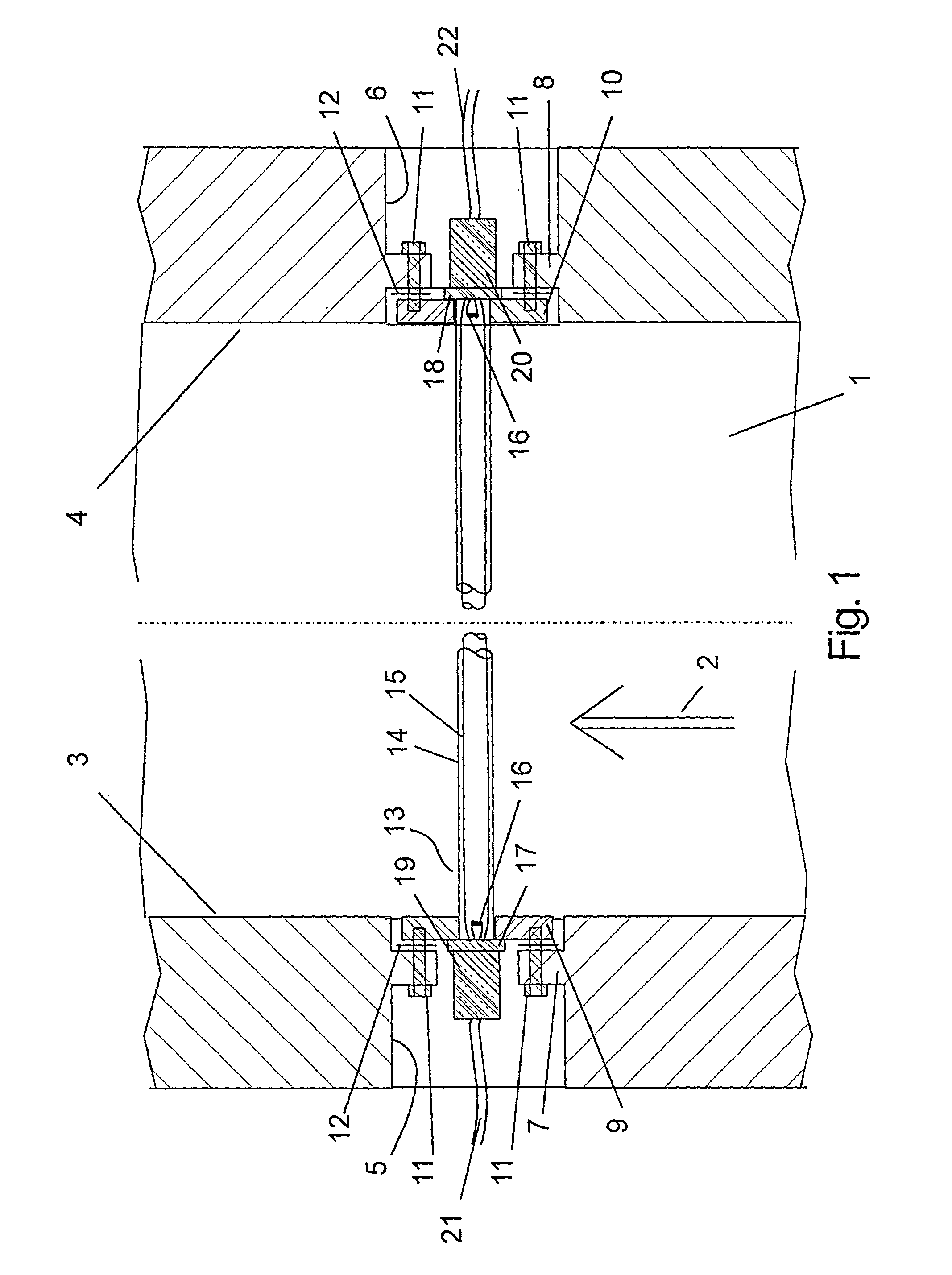UV radiation device for treating fluids with a simplified radiation chamber
a radiation device and simplified technology, applied in the direction of instruments, chemical/physical/physico-chemical processes, water/sludge/sewage treatment, etc., can solve the problems of reducing the cost of the radiation device itself as well as the transportation and assembly costs necessary, and the device represents a relatively high technical cos
- Summary
- Abstract
- Description
- Claims
- Application Information
AI Technical Summary
Benefits of technology
Problems solved by technology
Method used
Image
Examples
Embodiment Construction
[0017] While this invention is susceptible of embodiment in many different forms, there is shown in the drawings and will be described in detail, specific embodiments with the understanding that the present disclosure is to be considered as an exemplification of the principles of the invention and is not intended to limit the invention to the embodiments illustrated.
[0018] FIG. 1 shows a radiation chamber of a UV radiation device as a cross-sectional view taken from above.
[0019] The radiation chamber is bordered on its underneath by a base wall 1 and in relation to a flow direction 2 by a left side wall 3 and a right side wall 4. The side walls 3 and 4 in each case have a recess 5, 6 supporting bridges moulded in one-piece 7, 8 which run in the vertical direction. The bridges 7, 8 hold flange plates 9, 10, inserted from the inside of the radiation chamber which are connected with the side walls 3, 4 by means of threaded screws 11 from the outside with a flexible rubber gasket 12 ins...
PUM
 Login to View More
Login to View More Abstract
Description
Claims
Application Information
 Login to View More
Login to View More - R&D
- Intellectual Property
- Life Sciences
- Materials
- Tech Scout
- Unparalleled Data Quality
- Higher Quality Content
- 60% Fewer Hallucinations
Browse by: Latest US Patents, China's latest patents, Technical Efficacy Thesaurus, Application Domain, Technology Topic, Popular Technical Reports.
© 2025 PatSnap. All rights reserved.Legal|Privacy policy|Modern Slavery Act Transparency Statement|Sitemap|About US| Contact US: help@patsnap.com


